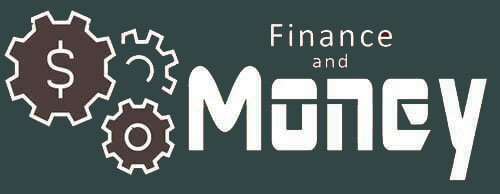Turning 73 is not just another birthday milestone. It marks the year you must begin taking Required Minimum Distributions—or RMDs—from your retirement accounts. This isn’t just a suggestion. It’s a rule from the IRS with serious tax consequences if ignored. Whether you’re already retired or still working, understanding RMDs is key to protecting your savings and staying on the right side of the tax code.
What Is an RMD?
A Required Minimum Distribution is the minimum amount you must withdraw each year from certain retirement accounts, starting the year you turn 73. This applies to tax-deferred accounts like traditional IRAs, SEP IRAs, SIMPLE IRAs, 401(k)s, 403(b)s, and 457(b) plans. The rule ensures that the IRS eventually collects taxes on the funds you’ve been growing tax-free.
As Monte Warren of Fidelity puts it: “The IRS doesn’t let you hold onto that benefit forever. Eventually, you must start taking money out of the account, paying taxes on any pre-tax contributions and earnings.”
Whose Rule Is This?
These rules come from the Internal Revenue Service and are based on federal law. The RMD age was increased from 72 to 73 in 2023 under the SECURE 2.0 Act. It will increase again to 75 in 2033. While Roth IRAs are exempt during the original owner’s lifetime, other tax-deferred accounts are not.
When Do You Start?
You must take your first RMD by April 1 of the year after you turn 73. After that, all RMDs are due by December 31 every year.
For example, if you turn 73 in 2025:
- Your first RMD is due by April 1, 2026, based on your December 31, 2024 balance.
- Your second RMD is due by December 31, 2026, based on your 2025 balance.
Taking both in one year could push you into a higher tax bracket, increase taxes on your Social Security benefits, and raise your Medicare premiums. That’s why many choose to take the first RMD by December 31 of the year they turn 73.
How Are RMDs Calculated?
The IRS uses a formula that considers your age and account balance. For most people, the Uniform Lifetime Table applies. Divide your prior year-end balance by a life expectancy divisor from the IRS table.
Example:
- Balance on Dec. 31, 2024: $500,000
- Divisor for age 73: 26.5
- RMD = $500,000 ÷ 26.5 = $18,867.92
If your spouse is more than 10 years younger and your sole beneficiary, a different table applies, which results in smaller withdrawals.
What Happens If You Get It Wrong?
If you don’t take your full RMD by the deadline, you may owe the IRS a 25% penalty on the amount you should have withdrawn. If corrected within two years, the penalty drops to 10%.
To fix a missed RMD:
- Take the missed withdrawal.
- File IRS Form 5329.
- Attach a letter explaining the mistake and the corrective action taken.
Even with a waiver, you’ll still owe income tax on the withdrawn amount.
Can You Take More Than the Minimum?
Yes, but it’s taxable. Strategic over-withdrawals can make sense in certain cases:
- During low-income years when you’re in a lower tax bracket.
- To cover living expenses.
- Before age 73, to reduce future RMDs through Roth conversions.
Be cautious. Withdraw too much, and you may push yourself into a higher tax bracket or increase Medicare premiums.
Handling Multiple Accounts
If you have:
- Multiple IRAs: Calculate each RMD, then take the total from one or more IRAs.
- Multiple 401(k)s: You must take RMDs separately from each one.
Because of this, many retirees roll old 401(k)s into a single IRA to simplify the process.
Still Working? You Might Qualify for an Exception
If you’re still working at age 73 and don’t own more than 5% of the company, you can delay RMDs from your current employer’s 401(k). But this does not apply to IRAs or former employer plans.
The Power of Qualified Charitable Distributions (QCDs)
If you’re at least 70½, you can donate up to $105,000 per year directly from your IRA to a qualified charity. This counts toward your RMD and is not taxed.
QCD benefits include:
- Lower adjusted gross income (AGI)
- Potentially lower Medicare premiums
- Reduced taxes on Social Security benefits
Just be sure the funds go directly from the IRA to the charity.
Should You Automate Your RMDs?
Many financial firms let you automate RMD withdrawals.
Pros:
- Avoid missed deadlines and penalties
- Ensure steady income
- Save time
Cons:
- Less flexibility to manage taxes
- Potential for incorrect withholding
- You still need to review annually
Automation is useful, but it doesn’t replace strategy.
Pitfalls and Downsides of RMDs
- You must take them, even if you don’t need the money.
- They increase your taxable income, possibly pushing you into a higher bracket.
- Higher AGI can raise Medicare premiums and make more of your Social Security benefits taxable.
- Mistakes can lead to costly penalties and IRS paperwork.
- They may force you to sell assets at inopportune times, especially during a market downturn.
How to Stay on Track
- Review your account balances and age-based divisor annually.
- Confirm calculations with your IRA custodian.
- Consider consolidating accounts for simplicity.
- Plan ahead to manage the tax consequences.
- Consult a financial advisor for multi-year planning.
Final Thoughts
RMDs aren’t just a bureaucratic rule—they are a turning point in your financial life. If handled well, they can be part of a smart income strategy. If mishandled, they can cost you thousands in taxes and penalties.
By learning the rules, understanding your options, and making informed decisions, you can turn your RMD obligation into a manageable—and possibly even beneficial—part of your retirement income plan.
When in doubt, seek help. A few hours with a financial advisor can save you far more in taxes, headaches, and missed opportunities.





